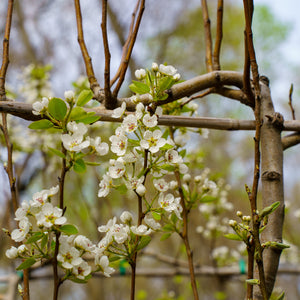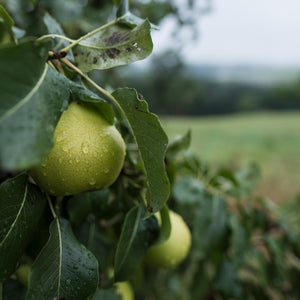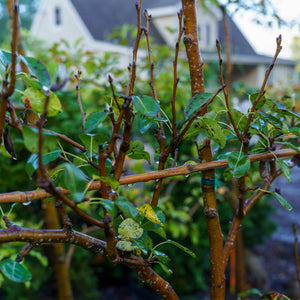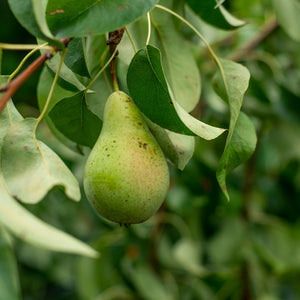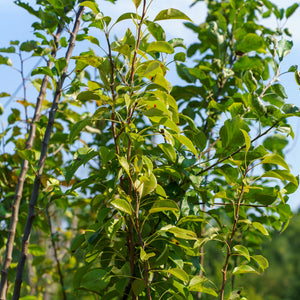The Pear Tree Guide
Pear trees (Pyrus spp.) are ornamental and fruit-bearing trees known for their elegant form, beautiful spring blossoms, and sweet, juicy fruit. Cultivated for centuries across Asia and Europe, pears have become a staple in edible landscapes and home orchards due to their long lifespan, seasonal beauty, and relatively low-maintenance care needs. Depending on the species, pear trees may be grown primarily for fruit or as ornamental specimens.
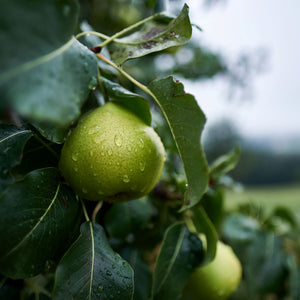
About
The two main types of pear trees are European pears (Pyrus communis) and Asian pears (Pyrus pyrifolia). European pears are the classic soft, buttery varieties, while Asian pears are crisp, round, and juicy like apples. Both types produce clusters of white flowers in early spring and develop fruits through the summer.
Notable cultivars include:
- Pyrus communis 'Bartlett' – One of the most popular and reliable European pear varieties, great for fresh eating and canning.
- Pyrus communis 'D’Anjou' – A late-ripening pear with green skin and a juicy, mild flavor.
- Pyrus communis 'Bosc' – Firm and aromatic with a bronze skin, ideal for baking.
- Pyrus communis 'Red Bartlett' – Offers the same flavor as Bartlett but with striking red skin.
- Pyrus pyrifolia 'Kikusui' – A crisp, sweet Asian pear with excellent storage ability.
- Pyrus pyrifolia 'Reddy Robin' – A productive and disease-resistant Asian pear with golden skin.
- Pyrus calleryana 'Cleveland Select' – Ornamental, non-fruiting variety with strong structure and prolific bloom.
Most pear trees benefit from cross-pollination, although some cultivars like ‘Bartlett’ are partially self-fertile. Even self-pollinating trees tend to produce more abundant and better-formed fruit with a second tree nearby.
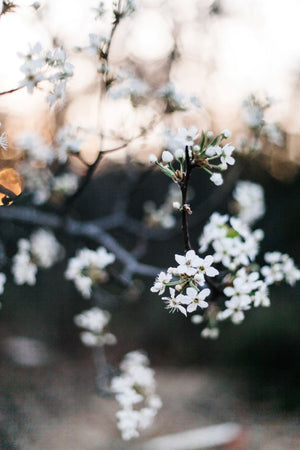
PLANTING
Proper site selection and planting technique are essential for a healthy, long-lived pear tree that reliably produces fruit.
USDA Hardiness Zones: Most pears thrive in Zones 4–8. Some Asian varieties may require warmer conditions and fewer chill hours.
Soil: Pear trees prefer well-drained loamy soil, rich in organic matter. Avoid overly wet or compacted sites.
Sunlight: Full sun is required for optimal fruit development and disease resistance. At least 6–8 hours of direct sun daily is ideal.
Watering: Provide regular water during the establishment period and dry spells. Mature trees need about 1 inch of water per week.
Spacing: Standard varieties should be spaced 15–20 feet apart; dwarf and semi-dwarf forms can be spaced 10–12 feet apart.
Planting Time: Early spring is best in cold climates, while fall planting is suitable in mild areas. Container-grown trees can be planted whenever the ground is workable.
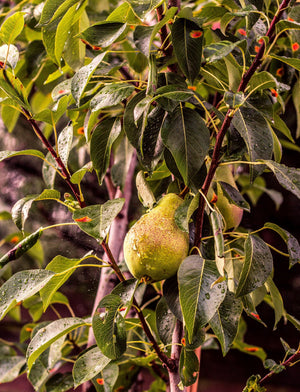
CARE
Watering: Water deeply and consistently, especially during dry summers and early fruit development. Avoid waterlogged conditions, which can lead to root rot.
Fertilizing: Apply a balanced fertilizer in early spring. Avoid high-nitrogen formulas late in the season, which can encourage vegetative growth at the expense of fruit.
Pruning: Prune pear trees in late winter or early spring before bud break. Use a central leader or modified leader system. Remove crossing branches and open the canopy to light and air. Avoid summer pruning unless removing water sprouts or diseased limbs.
Pests and Diseases: Pears may be affected by fire blight, pear psylla, codling moth, and rust. Select resistant cultivars, prune for good airflow, and monitor regularly for early signs of trouble.
Mulching: Apply 2–3 inches of organic mulch around the root zone to suppress weeds and retain moisture. Keep mulch away from the trunk.
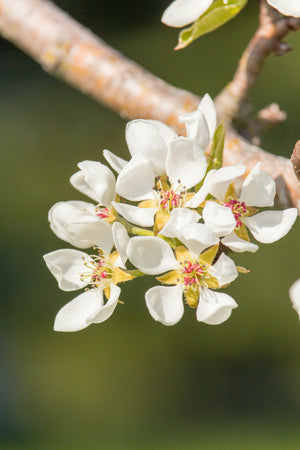
HOW TO USE
Focal Point: Pear trees make excellent focal points in edible or ornamental landscapes. Their upright form, spring flowers, and fruiting habit create year-round interest. Cultivars like ‘Bartlett’ or ‘Cleveland Select’ can be used to anchor the design of garden beds or orchard rows.
Edible Landscapes: Pear trees are perfect for home orchards, especially when paired with other fruiting trees like apples, plums, and peaches. Include pollinator-friendly shrubs and herbs like lavender or thyme nearby to support fruit set.
Privacy and Screening: Tall, upright varieties such as ‘Capitol’ or ‘Redspire’ work well as informal screens or privacy hedges, especially when planted in a staggered row.
Cottage and Formal Gardens: Dwarf and semi-dwarf pears fit beautifully into traditional garden styles. Train along fences or walls as espalier for a compact, sculptural feature.
Patio or Small Gardens: Dwarf varieties can thrive in containers or raised beds. Use on patios where their bloom and fruiting can be enjoyed up close.
Seasonal Interest: Beyond fruit, pear trees contribute beautiful white blossoms in spring, green foliage through summer, and golden fall color.
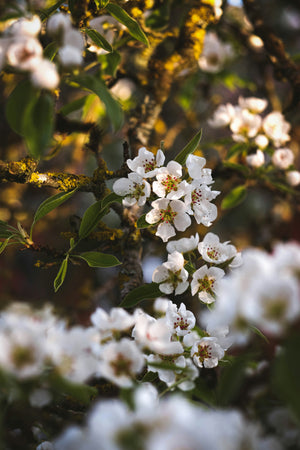
Common Questions
How to prune a pear tree? Prune annually in late winter. Focus on removing crossing branches and shaping the canopy to allow light and airflow. Use a central leader structure for fruiting trees.
When to prune a pear tree? Late winter or early spring before bud break is ideal. Avoid pruning during active growth to reduce the risk of disease.
Are pear trees self-pollinating? Some are partially self-fertile, but planting more than one variety generally improves yield and fruit quality.
How to grow a pear tree? Choose a sunny, well-drained location. Plant in spring or fall, mulch the root zone, and water regularly until established.
How to plant a pear tree? Dig a wide, shallow hole and plant at the same depth as the tree was in the nursery. Backfill with native soil and water well.
What does a pear tree look like? Pear trees have upright to rounded canopies, oval leaves, white blossoms in spring, and green to golden foliage in fall. Fruit shape varies by cultivar.
When do pear trees bloom? Pear trees bloom in early to mid-spring, often before or just as leaves emerge.
Do pear trees need full sun? Yes. Full sun is crucial for healthy growth, flowering, and fruit production.
How long does it take a pear tree to produce fruit? Most trees begin bearing fruit within 3–5 years, though dwarf forms may produce sooner.
How big do pear trees get? Standard trees can reach 20–30 feet tall and wide. Dwarf varieties stay around 8–12 feet.
How long do pear trees live? Pear trees can live 50 to 75 years or more with proper care.
Conclusion
Pear trees combine beauty and productivity in one elegant package. With their spring blooms, structured form, and sweet fruit, they serve as multi-functional additions to gardens, orchards, and landscapes. By selecting the right cultivar and following proper planting and care practices, gardeners can enjoy the rewards of pear trees for decades to come.
The Pear Collection
Sold Out
Sold Out
Sold Out
Sold Out
Sold Out
Sold Out

